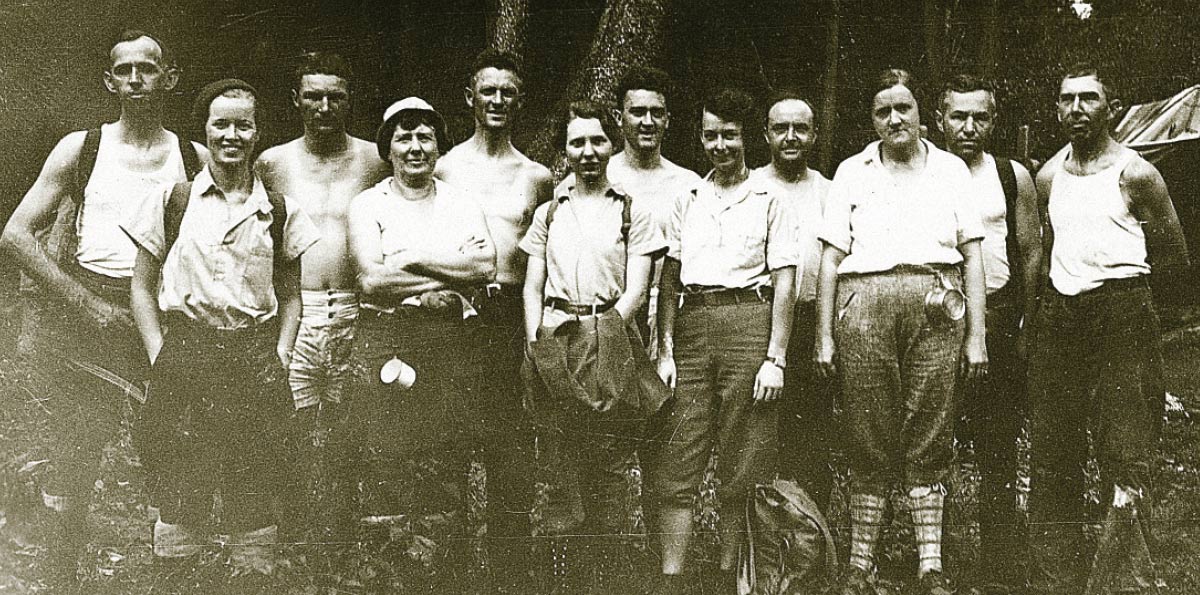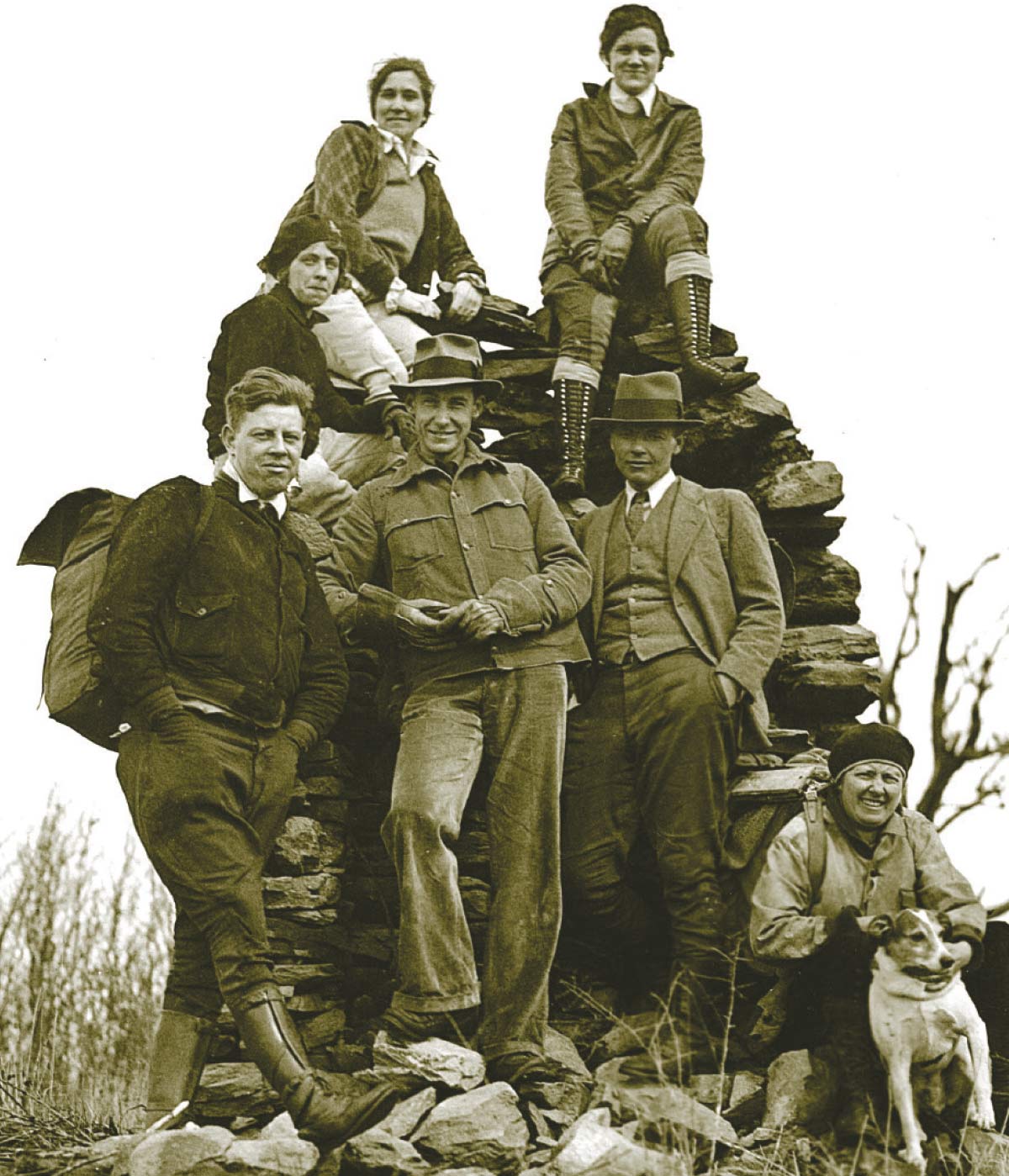



Harriett was part of a group of hiking enthusiasts from Knoxville who believed no group of persons anywhere would profit more from creating the Great Smoky Mountains National Park than they. Additionally, they saw that their efforts in the locating and routing of new trails, including the A.T., would help to “lay the nucleus of a trail system in the Smokies equal to any other mountain playground.” Their dedication to these two goals was unrelenting and underpinned the monthly group hikes, educational programs, social events, and other club activities. Even as they scrambled to find ways to pay for the 1934 handbook after losing their money in a bank failure, club members still carried out their A.T. clearing program, crediting the “bull-dog tenacity and unquenchable enthusiasm” of its loyal members.
From its beginnings in 1924, the Smoky Mountains Hiking Club brought together many southern Appalachian wilderness advocates. Among these were Harvey Broome, a co-founder of the Wilderness Society, Paul Fink, who served on the Board of Managers for the newly formed Appalachian Trail Conference and is a 2019 Appalachian Trail Hall of Fame inductee, Carlos Campbell, a founding member of the Great Smoky Mountains Conservation Association, and Jim Thompson, whose photographs were used extensively to advocate for a national park in the Smokies. Yet behind the scenes, female club members contributed to the club in innumerable and varied ways and their efforts sustained the club’s high level of activity and advocacy.
While the club’s women never achieved the levels of notoriety many of the male members did, evidence of their considerable contributions can be found throughout club records and correspondence. One such example is a letter from George Barber, chairman of the 1937 Appalachian Trail Conference Reservations Committee to Guy Frizzell, General Conference chairman. After the record-setting conference (16 states and the District of Columbia were represented), he wanted to “pay especial tribute to Miss Besse and Miss Sewell for the wonderful work they did.”


A confluence of factors enabled the young women who joined the Smoky Mountains Hiking Club. Women have always been active in conservation efforts — they were admitted to the Appalachian Mountain Club at its second regular meeting in 1876 and, by 1929, more women than men had become members of the National Parks Association. The cultural and economic necessities of the Great Depression, as well as the recent mobilization for suffrage and temperance, further encouraged women’s participation in public life to blossom. Furthermore, Appalachian women have a long history of labor unrest. The club’s women were part of a long Southern tradition of activism and civic engagement.